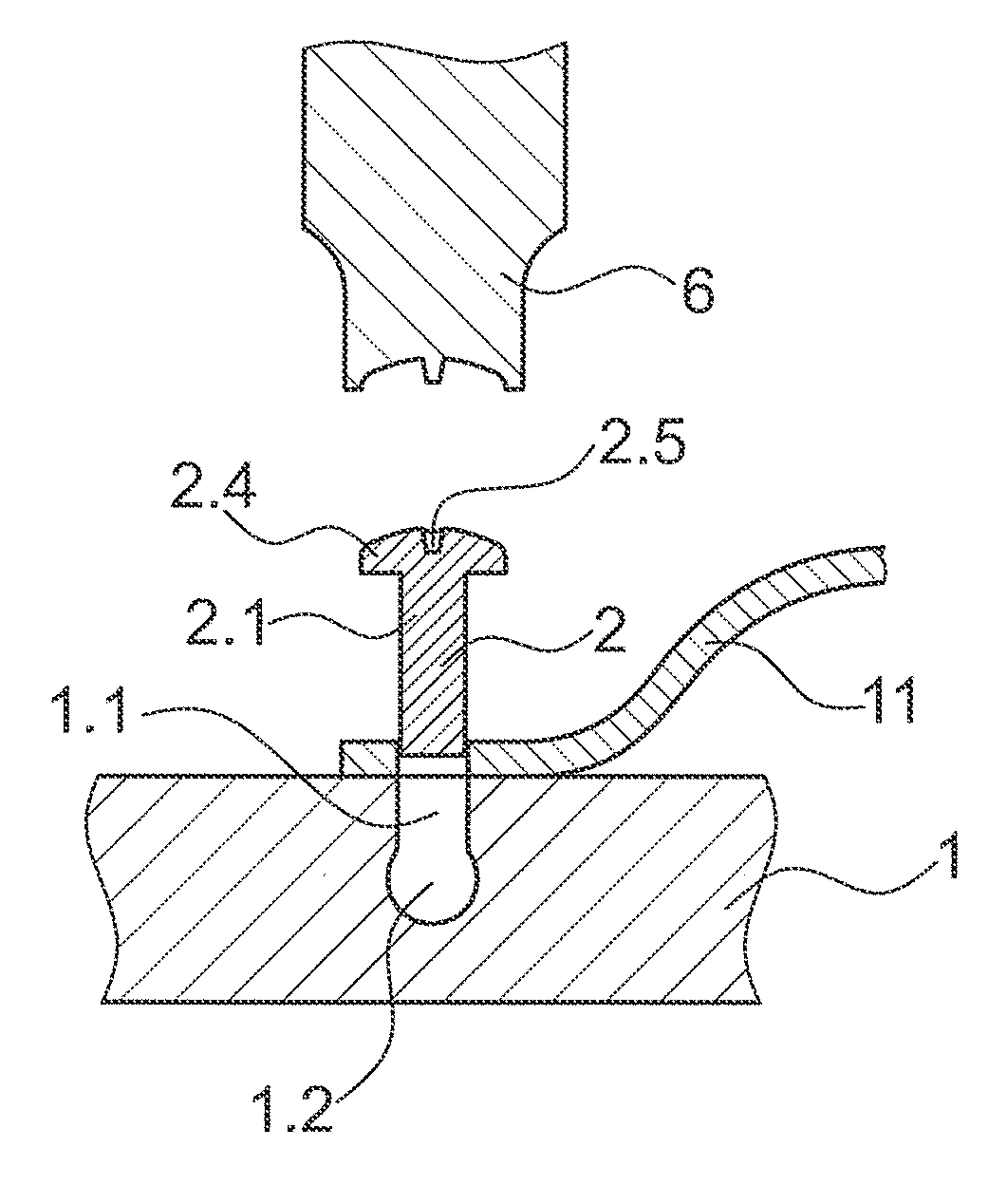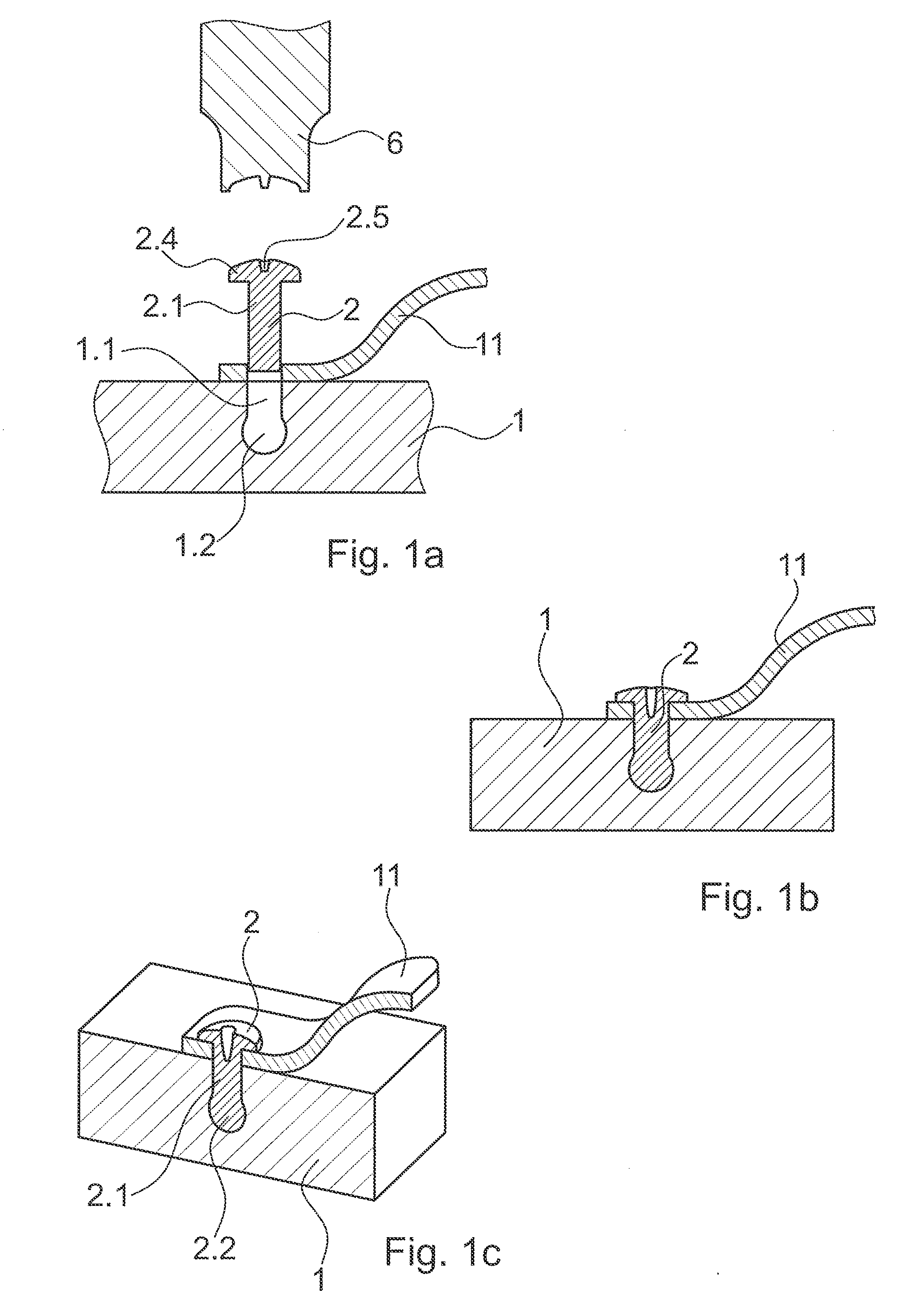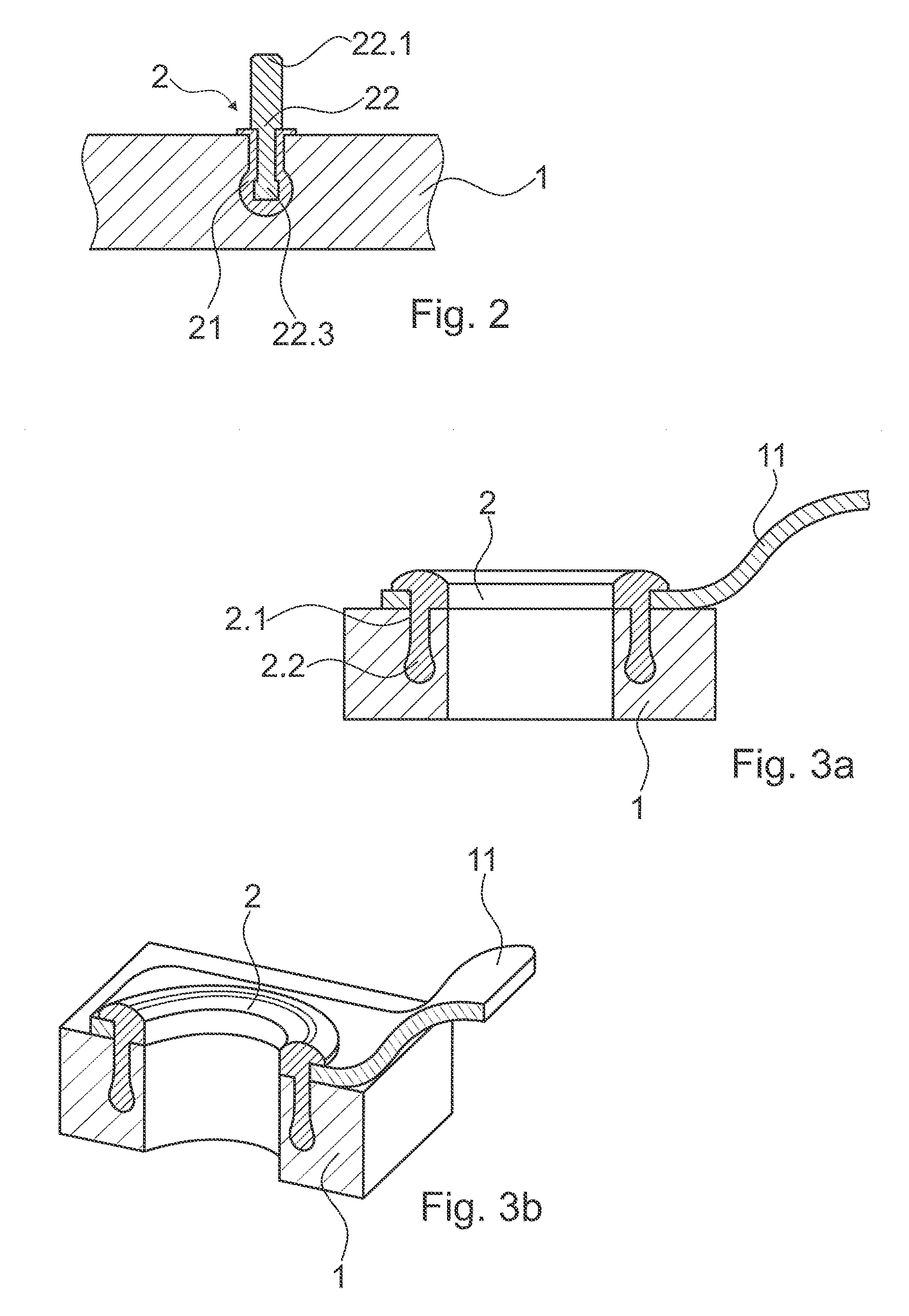Method for connecting parts relative to one another
a technology of connecting parts and parts, applied in the field of mechanical engineering and construction, can solve the problems of excluding the possibility of cavity delimitation, and achieve the effect of reducing the strain of the second material
- Summary
- Abstract
- Description
- Claims
- Application Information
AI Technical Summary
Benefits of technology
Problems solved by technology
Method used
Image
Examples
Embodiment Construction
[0062]FIG. 1a shows a basic configuration with a first part having an opening with a shaft portion 1.1 and a broadening portion 1.2 defining an undercut. A second part 2 in the depicted configuration consists of thermoplastic material. The second part has a shaft portion 2.1 and a proximal head 2.4 with a guiding indentation 2.5. The sonotrode (or horn) 6 has a shape adapted to the shape of the head portion. A further element 11 to be connected to the first part 1 is depicted with a through-going hole.
[0063]The initial head portion 2.4 is optional. Alternatively to the second part having such a head portion, such portion may be shaped in the casting process after liquefaction of the thermoplastic material in the vicinity to the sonotrode 6. Also, further alternatives exist.
[0064]For the casting process, the sonotrode 6 presses the second part 2 into the opening and couples vibrations into the second part, whereby the distal end face is pressed against the bottom of the opening. Due ...
PUM
| Property | Measurement | Unit |
|---|---|---|
| volume fraction | aaaaa | aaaaa |
| volume fraction | aaaaa | aaaaa |
| temperatures | aaaaa | aaaaa |
Abstract
Description
Claims
Application Information
 Login to View More
Login to View More - R&D
- Intellectual Property
- Life Sciences
- Materials
- Tech Scout
- Unparalleled Data Quality
- Higher Quality Content
- 60% Fewer Hallucinations
Browse by: Latest US Patents, China's latest patents, Technical Efficacy Thesaurus, Application Domain, Technology Topic, Popular Technical Reports.
© 2025 PatSnap. All rights reserved.Legal|Privacy policy|Modern Slavery Act Transparency Statement|Sitemap|About US| Contact US: help@patsnap.com



